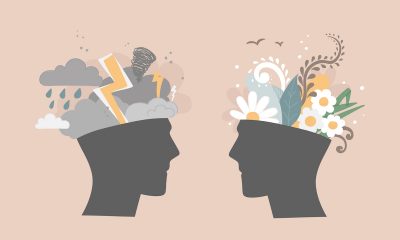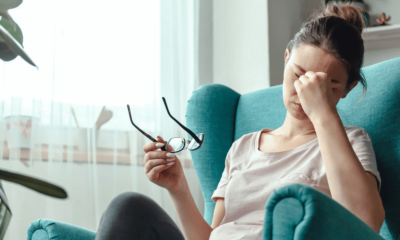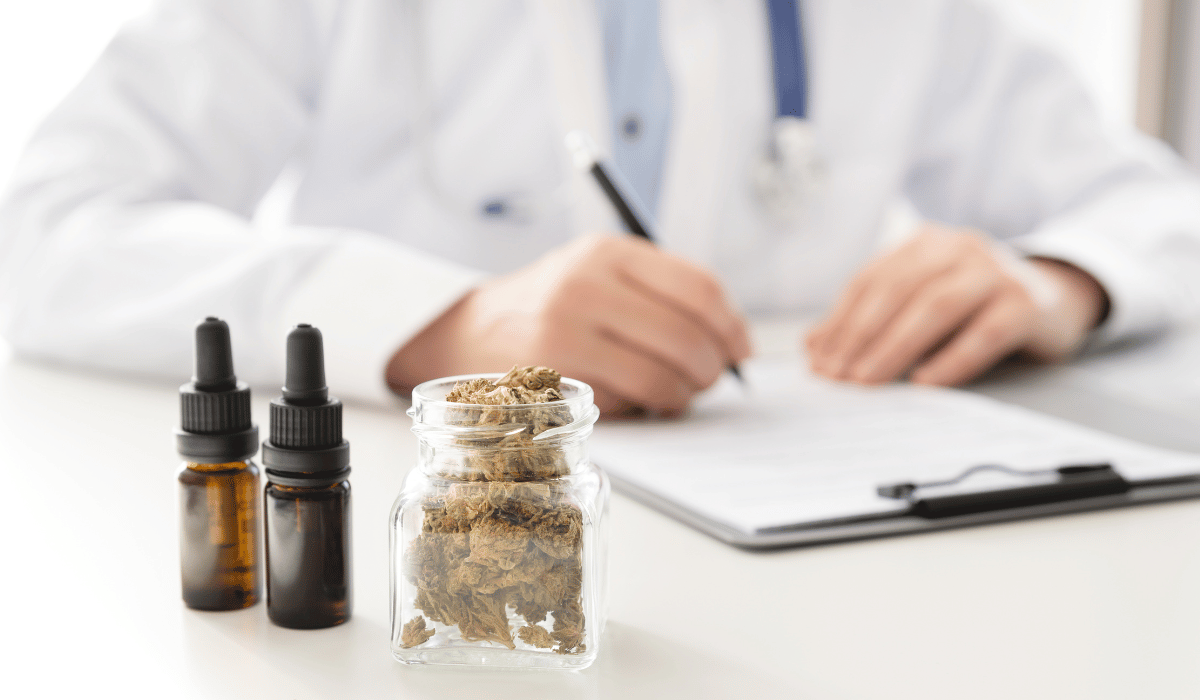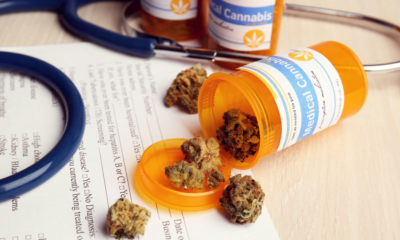In this case study consultant psychiatrist and UK cannabis clinician, Dr Tahzid Ahsan, explores the link between trauma and fibromyalgia – and how medical cannabis can help.
It is not uncommon as a psychiatrist to be treating someone with a triad of amalgamated diagnosis of fibromyalgia, Emotionally Unstable Personality Disorder (EUPD) and Post Traumatic Stress Disorder (PTSD).
Fibromyalgia is defined by debilitating widespread muscular pain mainly affecting the joints and muscles, associated with extreme tiredness and forgetfulness. Quite often misdiagnosed as depression, it affects 5 -7% of the global population and can be a devastating condition impacting all aspects of someone’s life.
EUPD is characterised by a fear of abandonment dominating ones thoughts accompanied by very intense emotions with possible self-harm or even suicide.
PTSD develops after a significant exposure to trauma leading one to experience flashbacks, panic attacks and nightmares with possible substance misuse as a coping strategy.
I see fibromyalgia as a physical manifestation of internalised psychological mechanisms. Trauma from a young age can evolve a person’s personality as well as lead to fluctuating symptoms of PTSD.
Substance misuse and social disorder can play a role in maintaining poor coping strategies. Later on in life, the unresolved issues begin to embed into thoughts and schemas, slowly developing fibromyalgia as expressed ‘outwardly’ through the form of physical pain.
Many patients have gone through several forms of treatment through no avail, coming to us to seek one last chance to lead a ‘normal’ life.
While there is good evidence that medical cannabis can improve symptoms of fibromyalgia and PTSD, EUPD less so.
Here I will reflect on a clinical case study to highlight how medical cannabis can help someone suffering from fibromyalgia.
A fibromyalgia case study
A 38-year old unemployed married female, with two young children, presented to me last year. For the purposes of this article, we shall call her Sarah.
Sarah was diagnosed with EUPD around the age of 22 following two impulsive overdoses, she was subsequently treated with sertraline to help with impulsivity and depression. She had gone through CBT that partially helped.
During this tumultuous time in her life, Sarah met a partner who was physically and emotionally abusive. After one particular violent episode during a pregnancy, she devastatingly suffered a miscarriage where she attended A+E.
This was Sarah’s chance to escape the abuse after a safeguarding referral was made by the A+E staff. As a result, she was placed into a Women’s Refuge as she slowly pieced her life back together.
Sarah had been experiencing flashbacks and nightmares related to her abuse for many months, eventually diagnosed with PTSD. Her GP initiated on an antidepressant called Mirtazapine and referred for Eye Movement Desensitization Reprocessing (EMDR) therapy, allowing for safe processing of past traumas.
Sarah met her current, loving and supportive husband around the age of 28. She started to note pain and fatigue around six months after the birth of her first child. This worsened quite significantly after the birth of her second child. The fatigue and pain worsened and she struggled to cuddle her children.
She was initially prescribed an antidepressant with no effect, and eventually was referred to a Chronic Fatigue Clinic whereby she was officially diagnosed with fibromyalgia. Sarah was trialled on various pain medications such as Orramorph, and a moderate exercise programme with very little improvement.
When she presented to the medical cannabis clinic she was experiencing widespread pain throughout her joints, with the onset of fatigue after very little exertion. She was unable to get her children ready for school or be involved in their activities, placing a lot of pressure on her husband.
Starting treatment with medical cannabis
Sarah had not used any cannabis since her early 20s. At our first meeting, as Sarah was cannabis naïve, I initiated a low-THC and high-CBD oil, using the ‘go low go slow approach’. This was a sativa THC 2mg/ml: CBD 50mg /ml, asking her to start at 0.1ml at a time as and when required, increasing it to take 0.5ml max per day.
At her one month review, she noted feeling quite relaxed and ‘sluggish’. She felt her general fatigue had worsened with very little effect on the pain. The over activation of the CB1 receptors within the peripheral nervous system (PNS) with very little THC psychoactive effects was causing her to feel sluggish.
She decided to try a more balanced oil with a higher-THC ratio called THC 10mg/ml : CBD 15mg/ml , 0.1ml-0.2ml at a time three times a day as and when, 0.6ml max per day.
At her three month review, Sarah noted a reduction of her joint pain by up to 30% and more surprisingly, a marked improvement in her debilitating period pain related to her diagnosis of endometriosis, for which she was very grateful.
For the first time in a while, she was able to do some fun activities with her husband and children on the weekend. Her mood was better and more stable, and her level of fatigue had reduced.
She was now having three to five good days in a week. The THC was helping to reduce her pain by working on the CB1 and CB2 receptors in her central nervous system (CNS), but she was still experiencing more severe pain at night that partially affected her sleep.
During her six month review Sarah started to note tolerance to the oil during the day. She was now using 0.2ml four to five times a day. Her pain was slowly worsening, which in turn impacted on her general functioning. She was now having two to three good days a week. Her sleep was getting worse due to the pain. Sarah wanted to continue with the oil as it gave her baseline relief, but needed something immediate for those periods of fluctuating pain.
I suggested a cannabis flower called Delahaze (a sativa-dominant) THC 18%: CBD 1 %, to use 0.1g-0.2g as and when required (to a 1g maximum daily dosage) for breakthrough pain. She was to continue with the oil in the background for baseline relief. I asked her to come back for a further follow up one month later.
At Sarah’s seven month review, she was flabbergasted by how the flower had helped her pain. She could not believe how effective it had been and was now doing most activities with her family, able to do enjoyable tasks that she hadn’t done in years. The major terpenes within the flower called caryophyllene and limonene were contributing to the entourage effect and helping to ease her pain and reduce her fatigue.
During her nine month review, Sarah continued to feel the benefits of both the oil and the flower. Due to sleep still being an issue, I introduced a pure indica flower called Hindu Kush with a THC 20%: CBD 1 % to use between 0.25-0.5g at night as required.
One year on
One year after she first started treatment with us, Sarah reported that she was the ‘person who I should have been’.
She had been sleeping a solid six to eight hours, from a previous four to six hours of broken sleep, and her pain and fatigue were well-managed.
She continued to use the oil in the background, the Delahaze for breakthrough pain and the Hindu Kush for sleep. She was now having five to seven good days a week and her husband and children had their loving mother back in their lives.
I am privileged to have heard many similarly life-transforming stories of people who are now living happily, pain-free and liberated thanks to medical cannabis.
In our next article, we will reflect on the role of medical cannabis in treating depression, anxiety and insomnia.

Dr Tahzid Ahsan
Dr Tahzid Ahsan is a consultant psychiatrist and prescribing cannabis doctor. Dr Ahsan is looking for volunteer cannabis users to be interviewed for a new book about the effects of medical cannabis from the patients perspective. Anyone interested please contact: volunteercannabiscalm@gmail.com

 News6 months ago
News6 months ago
 Science5 months ago
Science5 months ago
 Industry6 months ago
Industry6 months ago
 News6 months ago
News6 months ago
 News5 months ago
News5 months ago
 Health5 months ago
Health5 months ago
 News5 months ago
News5 months ago
 Health3 months ago
Health3 months ago













